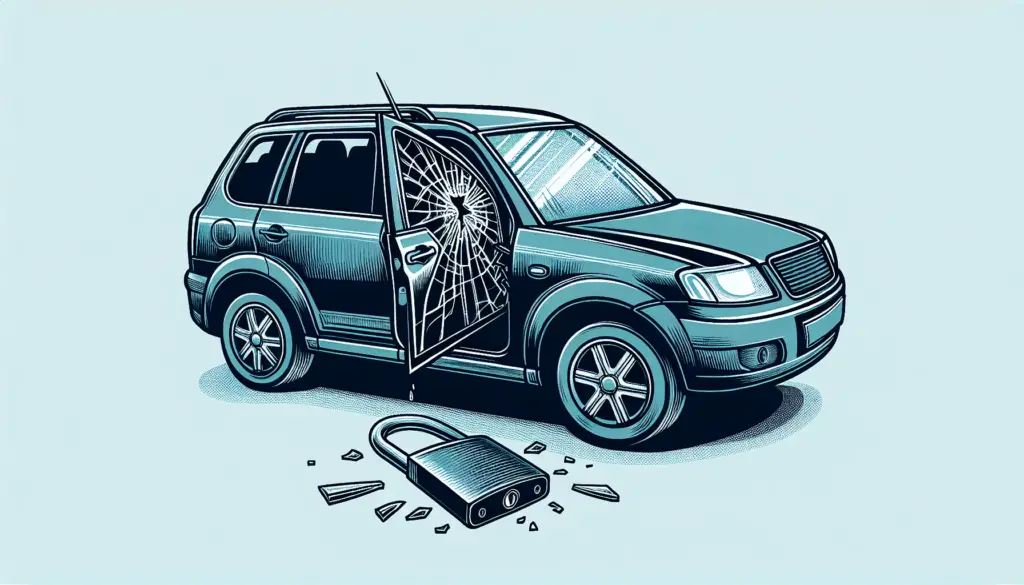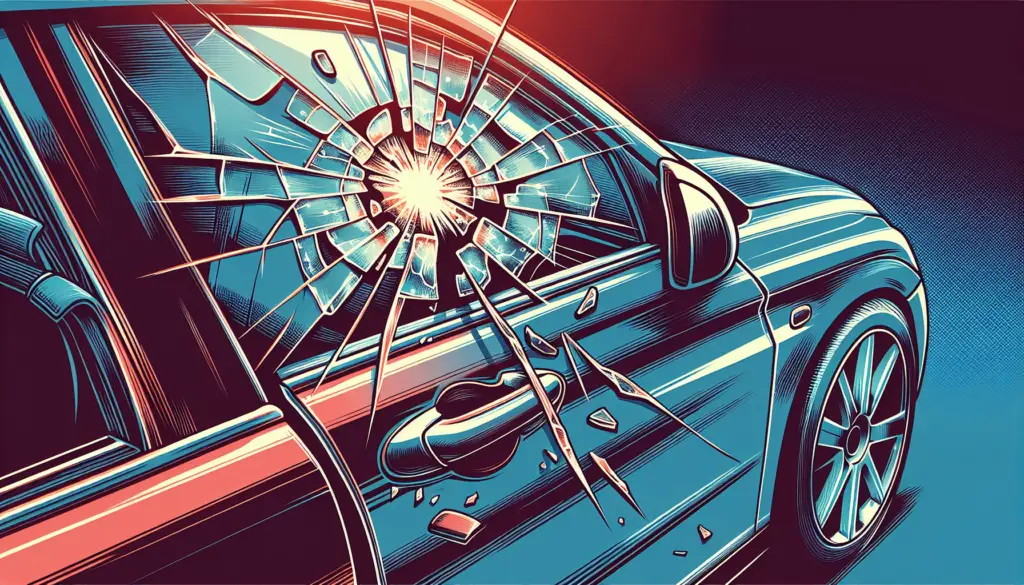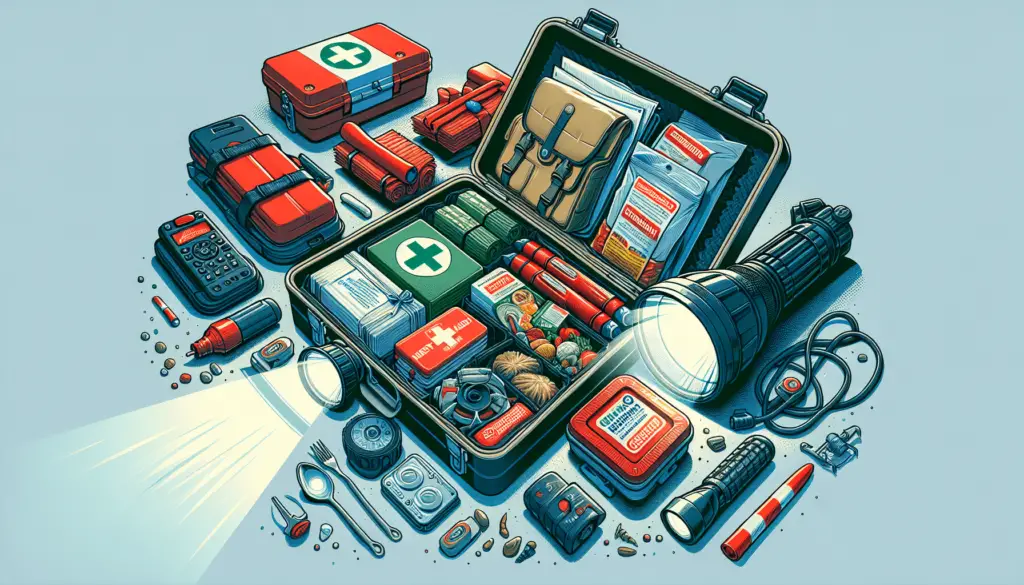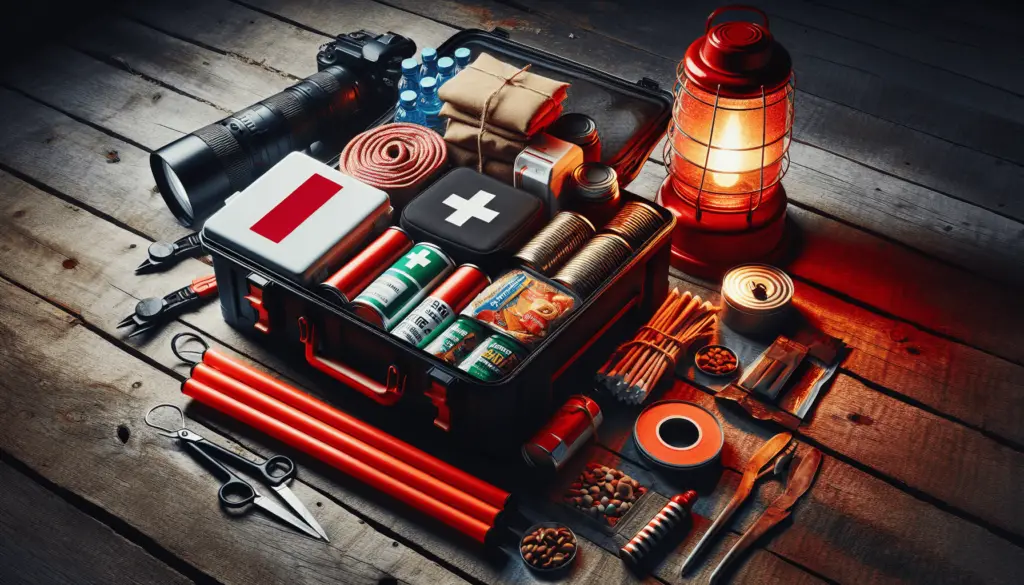In times of emergencies, it is vital to prioritize the safety and security of vehicles. Whether it’s a natural disaster or a sudden breakdown, being prepared and equipped with the right knowledge can make all the difference. This article explores the key considerations for ensuring vehicle security in emergency situations. From securing your vehicle to maintaining a well-stocked emergency kit, understanding these essential factors will help keep you and your vehicle protected when the unexpected strikes.
Location
Choosing a secure parking spot
When it comes to ensuring the security of your vehicle, choosing a secure parking spot is of utmost importance. Look for well-lit parking areas, preferably with surveillance cameras. Opt for parking spots that are closer to establishments or areas with high foot traffic, as this can deter criminals. Avoid parking in dimly lit or secluded areas, as these locations provide cover for potential thieves.
Parking in well-lit areas
Parking in well-lit areas significantly reduces the risk of your vehicle being targeted by criminals. Adequate lighting can deter thieves and vandals since their actions are more visible and increase the chances of getting caught. Park under streetlights, near well-illuminated entrances, or in parking lots with bright lighting. By doing so, you create a less appealing target for criminals and increase the overall security of your vehicle.
Avoiding secluded or isolated locations
Steering clear of secluded or isolated locations is key to avoiding potential security risks. These areas provide an opportunity for criminals to operate without interruption or witnesses. Whenever possible, opt for parking spots in busy areas where there are likely to be other people around. Avoid parking in isolated lots or areas where there are no other vehicles nearby. By choosing to park in more populated areas, you reduce the risk of becoming a target for criminals.
Physical Security Measures
Installing a car alarm system
Installing a car alarm system is an effective deterrent against theft and break-ins. These systems emit a loud sound or trigger the vehicle’s horn when tampered with, alerting nearby individuals and scaring off potential thieves. Modern car alarms often come with added features such as immobilizers, which prevent the engine from being started without the proper key or remote. Investing in a reliable car alarm system significantly increases the security of your vehicle.
Using steering wheel locks
Steering wheel locks serve as a visible deterrent, making it much more challenging for thieves to steal your vehicle. These locks are easily visible from outside the vehicle, clearly indicating that your car is well-protected. Steering wheel locks prevent the steering wheel from turning, rendering your vehicle immobile even if a thief manages to access the interior. By using a steering wheel lock, you add an additional layer of security to your vehicle.
Installing a GPS tracker
Installing a GPS tracker in your vehicle provides an extra layer of protection in case of theft or unauthorized use. GPS trackers allow you to monitor the location of your vehicle in real-time, enabling swift recovery in the event of a security breach. Some GPS tracking systems also offer features such as geofencing, which notifies you if your vehicle leaves a predefined area. Installing a GPS tracker not only enhances the security of your vehicle but also provides valuable peace of mind.

Emergency Preparedness
Keeping emergency supplies in the vehicle
Being prepared for emergencies is crucial, and keeping emergency supplies in your vehicle can be a lifesaver in unforeseen circumstances. Be sure to have a first aid kit, a flashlight with extra batteries, a blanket, and non-perishable food and water in your car. Additionally, consider including items such as a multi-tool, spare clothing, and a portable phone charger. These supplies will prove invaluable in various emergency situations and help you stay safe until help arrives.
Carrying a spare tire and tools
A flat tire can occur at any time, leaving you stranded on the side of the road. To ensure your safety and mobility, always carry a spare tire in your vehicle and the necessary tools to change it. Familiarize yourself with the process of changing a tire and ensure your spare tire is properly inflated. Additionally, keep a tire pressure gauge, a lug wrench, and a jack in your vehicle. By being prepared with these essentials, you can quickly get back on the road and reach your destination safely.
Knowing basic car maintenance
Having a basic understanding of car maintenance is essential for ensuring your vehicle’s reliability and safety. Regularly check your vehicle’s fluid levels, including oil, coolant, and brake fluid. Familiarize yourself with how to check and change your vehicle’s air filters, headlights, and windshield wipers. Knowing how to jump-start your vehicle and understanding the warning signs of potential issues can help prevent breakdowns and mitigate risks during emergencies.
Emergency Communication
Having a charged mobile phone
In emergencies, access to a functional mobile phone can be crucial for communication and seeking help. Always ensure your phone is fully charged before embarking on a journey. Keep a car charger in your vehicle to recharge your phone if needed. By having a charged mobile phone, you can quickly contact emergency services or inform your loved ones about your situation in case of an emergency.
Carrying a portable charger
In situations where access to a power outlet is limited, a portable charger can be a lifesaver. Invest in a portable charger that is compatible with your mobile phone and keep it in your vehicle. Portable chargers store energy and can provide multiple charges to your phone in emergencies. By having a portable charger, you can extend the battery life of your mobile phone and ensure you remain connected during critical situations.
Keeping a list of emergency contacts
Maintaining a list of emergency contacts is essential for quick and efficient communication during emergencies. Include numbers for local emergency services, your insurance company, roadside assistance, and trusted friends or family members. Keep a physical copy of this list in your vehicle and add the contacts to your phone’s address book. By having a readily accessible list of emergency contacts, you can quickly reach out for assistance when needed.

Vehicle Access
Securing windows and doors
Ensuring the physical security of your vehicle starts with securing the windows and doors properly. Always lock your vehicle when leaving it unattended, and double-check that all windows are fully closed. If your vehicle has a remote keyless entry system, make sure to activate the automatic locking feature. Windows can be an entry point for thieves, so ensure they are not cracked or easily forced open. Taking these simple measures significantly reduces the risk of unauthorized access to your vehicle.
Using locking wheel nuts
Locking wheel nuts are specialty lug nuts designed to prevent the theft of your vehicle’s wheels. These nuts have unique patterns that can only be removed with a corresponding key, making it difficult for thieves to steal your wheels. By installing locking wheel nuts, you protect your valuable tires and rims from being easily stolen. This additional measure of security adds an extra layer of protection to your vehicle.
Utilizing vehicle immobilizers
Vehicle immobilizers are electronic security devices that prevent unauthorized starting of your vehicle’s engine. These devices are commonly factory-installed or available as aftermarket options. Immobilizers disable the engine’s ignition system, making it impossible to start the vehicle without the correct key or authorization. By utilizing a vehicle immobilizer, you enhance the overall security of your vehicle and deter thieves from attempting to steal it.
Visibility and Awareness
Being aware of surroundings
Maintaining awareness of your surroundings is crucial for ensuring your safety and the security of your vehicle. Stay vigilant and observe your surroundings when parking, especially in unfamiliar areas. Look out for suspicious individuals or activities and trust your instincts. Being aware of your surroundings reduces the chances of being taken by surprise and allows you to react appropriately to potential threats.
Keeping windows clear for visibility
Clear visibility from inside your vehicle is essential for maintaining awareness of your surroundings and reducing blind spots. Keep your windows clean and free from obstructions such as stickers, decals, or hanging items that may obscure your view. A clear line of sight enables you to identify potential hazards and react quickly, enhancing your overall safety and security.
Using mirrors effectively
Mirrors provide invaluable visibility around your vehicle, so it’s important to use them effectively. Adjust your mirrors to provide a wide field of view, ensuring you can see areas that may be hidden from your direct line of sight. Regularly check your mirrors for approaching vehicles or individuals when entering or exiting a parking spot. Using mirrors effectively enhances your situational awareness and helps prevent accidents or security breaches.

Safety Technology
Installing a dash cam
Installing a dash cam in your vehicle offers multiple benefits for both safety and security. Dash cams record your journey and can provide valuable evidence in the event of an accident or security incident. Some dash cams have features such as parking mode, which can capture footage while your vehicle is parked. The presence of a dash cam can also deter criminals who may be aware of its presence. Consider investing in a dash cam to enhance the overall safety and security of your vehicle.
Using vehicle tracking systems
Vehicle tracking systems utilize GPS technology to monitor your vehicle’s location in real-time. These systems can be helpful in the event of theft or unauthorized use, enabling you to track and locate your vehicle quickly. Some tracking systems also offer features such as geofencing, which can notify you if your vehicle leaves a predetermined area. By utilizing a vehicle tracking system, you gain an additional layer of security and peace of mind.
Utilizing automatic emergency braking
Automatic emergency braking (AEB) is an advanced safety feature that can help prevent collisions or reduce their severity. AEB systems use sensors to detect potential obstacles or vehicles ahead and automatically apply the brakes if a collision is imminent. By utilizing AEB, you increase your vehicle’s safety and reduce the risk of accidents caused by human error. This technology can be particularly useful in emergency situations where a sudden stop is required.
Defensive Driving
Maintaining a safe following distance
Maintaining a safe following distance is a fundamental aspect of defensive driving. Allow enough distance between your vehicle and the one ahead to provide ample time for braking and evasive maneuvers if necessary. This distance is especially important in emergencies, as it allows you to react quickly and avoid collisions. By practicing a safe following distance, you enhance your overall safety on the road.
Being alert to potential threats
Being alert and attentive while driving is crucial for identifying potential threats and hazards. Scan the road ahead, check your mirrors regularly, and be aware of the actions of other drivers. Look out for erratic behavior, aggressive driving, or vehicles that appear to be following you. By staying alert to potential threats, you can proactively respond and minimize the risk of becoming a victim of a security incident.
Adhering to traffic laws
Adhering to traffic laws is a fundamental practice of defensive driving that enhances your overall safety and security. Follow speed limits, obey traffic signs and signals, and yield to pedestrians and other vehicles when required. By adhering to traffic laws, you reduce the likelihood of accidents and confrontations on the road. It also helps maintain order and contributes to a safer driving environment for everyone.

Securing Valuables
Hiding valuables out of sight
Leaving valuable items visible in your vehicle can attract the attention of thieves and increase the risk of a break-in. Always store valuables out of sight, either in the trunk or hidden compartments within your vehicle. If you need to leave valuables in your car temporarily, use items such as car seat covers or blankets to conceal them. By keeping valuables hidden, you minimize the potential temptation for criminals to target your vehicle.
Locking valuable items in the trunk
When transporting valuable items in your vehicle, lock them securely in the trunk to deter theft. Ensure your trunk is secure and cannot be easily accessed from inside the vehicle. If your vehicle does not have a trunk, consider using a lockable cargo cover or utilizing secure storage options such as a rooftop cargo carrier. By locking valuable items in the trunk, you reduce the risk of opportunistic theft.
Utilizing vehicle safes
Vehicle safes provide an additional layer of security for protecting your valuable belongings. These safes can be securely mounted in your vehicle and offer protection against theft. Vehicle safes are typically designed to be tamper-resistant and can provide a secure storage solution for items such as cash, documents, or electronic devices. By utilizing a vehicle safe, you can have peace of mind knowing your valuables are well-protected.
Driver Training
Attending defensive driving courses
Attending defensive driving courses can significantly improve your driving skills and enhance your ability to handle challenging situations. Defensive driving courses teach techniques such as hazard perception, collision avoidance, and safe driving practices. These courses help sharpen your situational awareness, enabling you to anticipate and respond to potential security threats on the road. By investing in driver training, you become a more confident and secure driver.
Improving situational awareness
Situational awareness is a critical skill for maintaining personal security while driving. Improving your situational awareness involves actively observing your surroundings, scanning for potential risks, and anticipating the actions of other drivers. Stay focused on the road and avoid distractions such as mobile phones or other devices. By constantly assessing your environment and anticipating potential threats, you can react promptly and avoid becoming a victim.
Learning basic vehicle self-defense techniques
Learning basic vehicle self-defense techniques can empower you to protect yourself and your vehicle in emergency situations. Techniques such as defensive driving maneuvers, vehicle control exercises, and evasive driving techniques can be invaluable in times of danger. Consider enrolling in courses or workshops that teach these skills, as they provide practical knowledge and enhance your ability to handle security risks on the road.
By implementing these key considerations for vehicle security in emergencies, you significantly reduce the risk of theft, break-ins, or becoming a victim of unsafe situations. Prioritizing the security of your vehicle not only safeguards your assets but also ensures your personal safety. Incorporate these practices into your routine, stay alert to potential risks, and drive defensively to create a secure environment for yourself and your vehicle.
